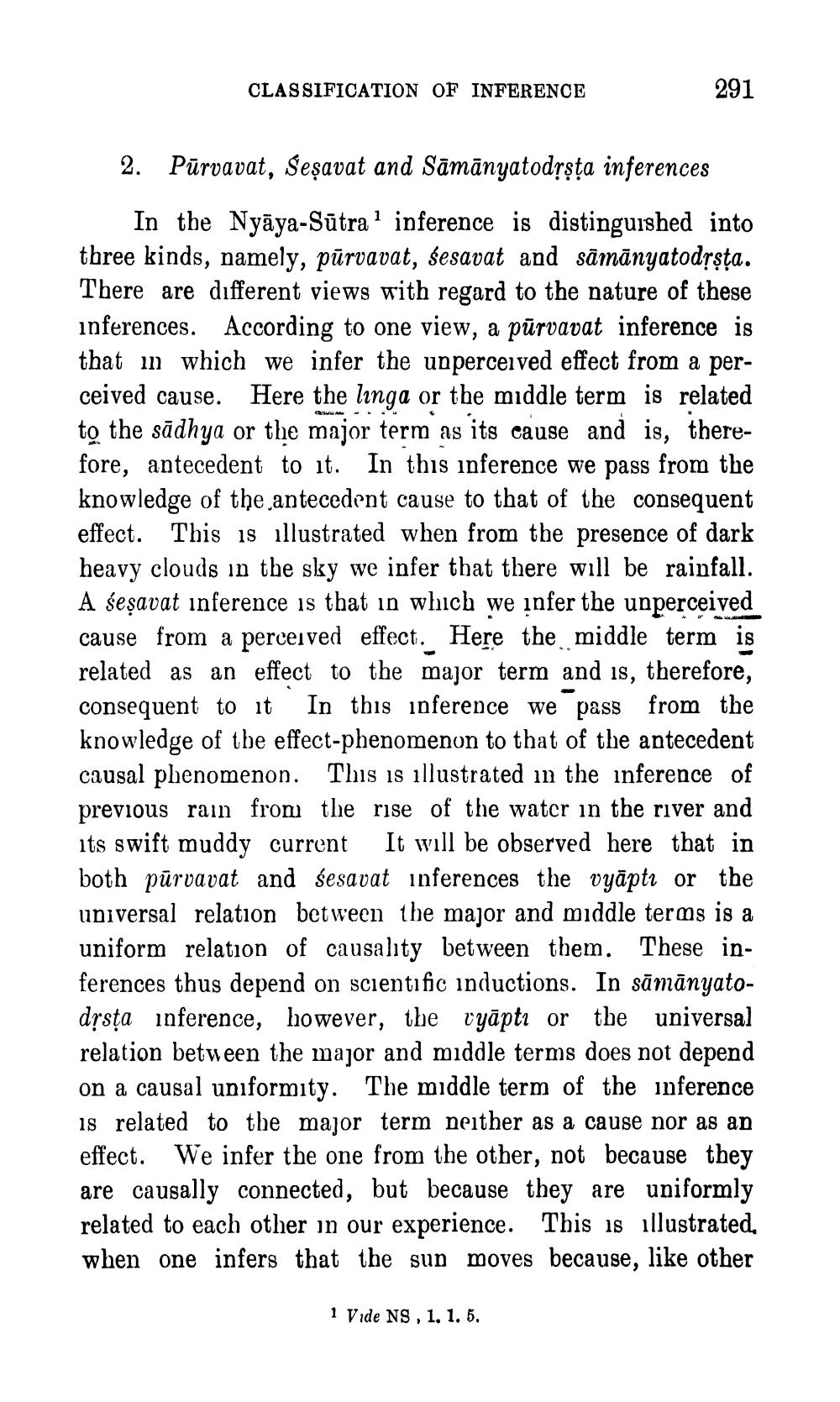________________
CLASSIFICATION OF INFERENCE
291
2. Pūrvavat, Seșavat and Sāmānyatodrșța inferences
In the Nyāya-Sūtra' inference is distinguished into three kinds, namely, pūrvavat, sesavat and sāmānyatodrsta. There are different views with regard to the nature of these inferences. According to one view, a pūrvavat inference is that in which we infer the unperceived effect from a perceived cause. Here the linga or the middle term is related to the sādhya or the major term as its cause and is, therefore, antecedent to it. In this inference we pass from the knowledge of the antecedent cause to that of the consequent effect. This is illustrated when from the presence of dark heavy clouds in the sky we infer that there will be rainfall. A sesavat inference is that in which we infer the unperceived cause from a perceived effect. Here the middle term is related as an effect to the major term and is, therefore, consequent to it In this inference we pass from the knowledge of the effect-phenomenon to that of the antecedent causal phenomenon. This is illustrated in the inference of previous rain from the rise of the water in the river and its swift muddy current It will be observed here that in both pūrvavat and sesavat inferences the vyāptı or the universal relation between the major and middle terms is a uniform relation of causality between them. These inferences thus depend on scientific inductions. In sāmānyatodrsța inference, however, the vyāptı or the universal relation between the major and middle terms does not depend on a causal uniformity. The middle term of the inference is related to the major term neither as a cause nor as an effect. We infer the one from the other, not because they are causally connected, but because they are uniformly related to each other in our experience. This is illustrated, when one infers that the sun moves because, like other
1 Vide NS , 1, 1.5.




